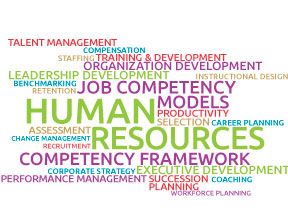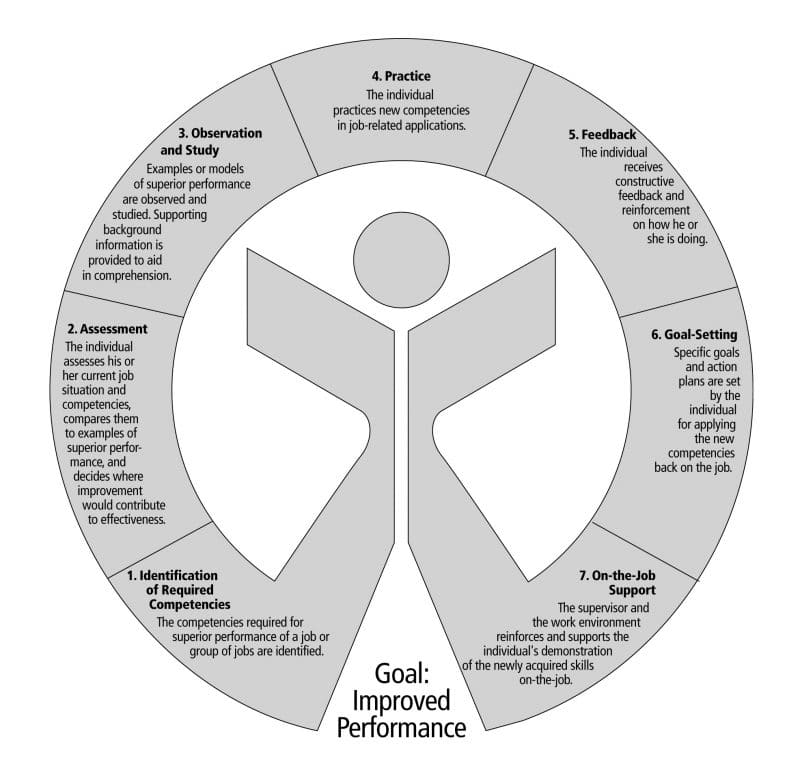 What value is added when human resource applications are built on a foundation of job competency models?
What value is added when human resource applications are built on a foundation of job competency models?
Career Pathing and Retention
Job Competency Models provide detailed maps for existing employees to follow as they plan their careers and self-development. The model for any given job describes the exact competencies necessary to advance to that job, giving aspirants both secure information and incentive to acquire those competencies. That’s the kind of open opportunity that keeps talented and ambitious people working for you.
Recruitment and Selection
Today you may have all your players in place, but every new day brings the possibility of change. Retirement, outside recruitment, personal difficulties:
These and many other events can leave you with holes to fill–and anxiety about the quality of the people you’ll choose to fill them.
By applying Job Competency Models to the promotion and hiring processes, your senior management can greatly simplify their work. Models identify optimal career paths to look for, simplifying the search for candidates. Models also describe in detail the exact competencies employees will need to perform well in their jobs.
Performance assessments underlie decisions about employee rewards and promotions. Unfortunately many employees feel they have little control over the results of their work. You can counter this perception by linking employees’ rewards to their competent performance in employees’ rewards to their competent performance in defined areas. By doing this you empower workers and encourage cooperative, team-building behavior.
Job Competency Modeling provides an excellent base for performance management. As with development and recruitment, employee assessment is based on accurate, detailed information about job performance. To appraise this performance effectively, your managers need:
- Accurate job-performance standards
- Clear descriptions of job behaviors required to perform specific job tasks
- Indicators of both average and superior job competencies
When you use competency models to provide these data, assessments yield useful, practical recommendations. Competecy–based compensation systems also explicitly tie rewards to the development of key competencies. This gives employees greater control over their professional development and offers incentive for excellence to workers and managers on every level.
Training and Development
Competency modeling provides a truly ideal framework for your training programs. Studies show that competency-based training offers a return on investment (ROI) nearly ten times higher than the ROI of traditional training methods. And improvement of your training is central to Workitect’s purpose. We have developed a process entitled the Competency Acquisition Process (CAP) for managing training efforts through increasing levels of competencies. The CAP consists of seven steps, outlined below:
– Identification of Required Competencies: Job Competency Models supply this information, or a simpler, less detailed system can be used for non-critical jobs.
– Assessment: Employees assess their current competencies and compare them to examples of superior performance. Performance assessments by managers are obvious tools as well. Employees and managers then decide which skills to focus on.
– Observation and Study: Employees study examples or models of superior performance. Trainers provide supporting information to aid participants’ comprehension.
– Practice: After acquiring a basic understanding of the concepts involved, participants move to practical, job-related applications of their new knowledge.
– Feedback: Trainers observe participants applying their new knowledge and offer constructive feedback and reinforcement.
– Goal-Setting: Trainers work with employees to set specific goals and action plans for applying new competencies back on the job.
– On-the-Job-Support: Supervisor and peers reinforce and support each individual’s demonstration of newly acquired skills.
When your employees enter this cyclical process of planning their own development and acquiring necessary training, everyone benefits. They take responsibility for their own career paths, their own job security, and you gain an ever more skilled and competent workforce. Improved performance, bonuses, increased productivity, and career advancement spell success for everyone.
Let Us Help You
Workitect has recently helped organizations in Chicago, New York, and beyond to develop competency models, frameworks, and applications for human resources and talent management. You can learn how to develop your own models and applications by attending or scheduling our Building Competency Models workshop.
 For additional information, call 800-870-9490, email edward.cripe@workitect.com
For additional information, call 800-870-9490, email edward.cripe@workitect.com
or use the contact form at Workitect.
©2019, Workitect, Inc.


Leave A Comment